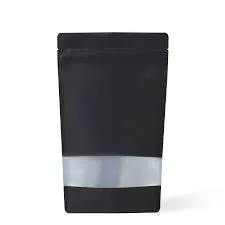- Afrikaans
- Albanian
- Amharic
- Arabic
- Armenian
- Azerbaijani
- Basque
- Belarusian
- Bengali
- Bosnian
- Bulgarian
- Catalan
- Cebuano
- chinese_simplified
- chinese_traditional
- Corsican
- Croatian
- Czech
- Danish
- Dutch
- English
- Esperanto
- Estonian
- Finnish
- French
- Frisian
- Galician
- Georgian
- German
- Greek
- Gujarati
- haitian_creole
- hausa
- hawaiian
- Hebrew
- Hindi
- Miao
- Hungarian
- Icelandic
- igbo
- Indonesian
- irish
- Italian
- Japanese
- Javanese
- Kannada
- kazakh
- Khmer
- Rwandese
- Korean
- Kurdish
- Kyrgyz
- Lao
- Latin
- Latvian
- Lithuanian
- Luxembourgish
- Macedonian
- Malgashi
- Malay
- Malayalam
- Maltese
- Maori
- Marathi
- Mongolian
- Myanmar
- Nepali
- Norwegian
- Norwegian
- Occitan
- Pashto
- Persian
- Polish
- Portuguese
- Punjabi
- Romanian
- Russian
- Samoan
- scottish-gaelic
- Serbian
- Sesotho
- Shona
- Sindhi
- Sinhala
- Slovak
- Slovenian
- Somali
- Spanish
- Sundanese
- Swahili
- Swedish
- Tagalog
- Tajik
- Tamil
- Tatar
- Telugu
- Thai
- Turkish
- Turkmen
- Ukrainian
- Urdu
- Uighur
- Uzbek
- Vietnamese
- Welsh
- Bantu
- Yiddish
- Yoruba
- Zulu
Innovative Solutions for Effective Packaging and Sustainable Shipping Practices
The Importance of Packaging in Modern Consumerism
In today's fast-paced consumer economy, packaging plays a pivotal role in the success of products across all industries. It is often the first point of contact between a brand and its potential customers, serving not only to protect the product but also to communicate its value, quality, and brand identity. As we delve deeper into the significance of packaging, it becomes evident that it encompasses much more than mere functionality; it serves as a vital marketing tool, a sustainability indicator, and an integral part of the customer experience.
1. First Impressions Matter
When consumers encounter a product on a store shelf or an online marketplace, the packaging is what catches their eye. It is a critical distinguishing factor in a sea of options. A well-designed package can evoke curiosity and attract attention, which is crucial in a competitive market where consumers are often overwhelmed by choices. Design elements such as color, typography, and imagery work together to create an emotional connection with consumers. For instance, bright colors might suggest fun and energy, while minimalist designs could imply sophistication and elegance. By conveying the right message through packaging design, brands can influence purchasing decisions effectively.
2. Communication of Brand Identity
Packaging serves as a canvas for communicating a brand’s identity and values. It reflects the brand's story, philosophy, and commitment to quality. Companies often use packaging to showcase their logo prominently, reinforce brand recognition, and set themselves apart from competitors. For example, luxury brands like Chanel or Tiffany & Co. invest significantly in their packaging to ensure it embodies their heritage and exclusivity. Moreover, packaging can communicate important information, such as ingredients, usage instructions, and ethical sourcing, helping consumers make informed choices that align with their values and lifestyle.
3
. Functionality and Protectionpackeging

Beyond aesthetics, effective packaging must also be functional. One of its primary roles is to protect the product during transportation and storage, ensuring that it arrives in perfect condition. Durable packaging prevents damage and spoilage, safeguarding the consumer's investment. For fragile items, such as electronics or glassware, innovative packaging solutions like molded inserts or cushioning materials are essential.
Furthermore, packaging must also be user-friendly. Easy-to-open and resealable packages enhance the consumer experience, allowing customers to use the product conveniently. Brands that prioritize functionality in their packaging design not only improve customer satisfaction but also encourage repeat purchases.
4. Sustainability and Eco-Friendliness
With growing awareness of environmental issues, sustainability has become a crucial consideration in packaging design. Consumers are increasingly drawn to brands that demonstrate a commitment to reducing their ecological footprint. Eco-friendly packaging materials, such as biodegradable plastics, recycled paper, and minimalistic designs, are garnering attention as brands strive to meet the demands of environmentally conscious consumers. Additionally, transparent communication about sustainability initiatives on packaging can enhance brand loyalty, as consumers feel empowered to support eco-friendly practices.
5. The Future of Packaging Innovation and Technology
As technology advances, the future of packaging looks promising. Innovations such as smart packaging, which incorporates QR codes or NFC technology, allow consumers to engage with the brand in new ways. This technology can provide additional information about the product, offer promotions, or even track freshness. Moreover, augmented reality (AR) packaging experiences are beginning to emerge, blending the physical and digital worlds to create interactive consumer experiences.
In conclusion, packaging is an essential element of modern consumerism that goes far beyond its basic role of protection and containment. It serves as a vital marketing tool, a reflection of brand identity, a facilitator of functionality, and a lever for sustainability initiatives. As consumer preferences continue to evolve, brands that prioritize innovative and thoughtful packaging solutions will not only capture the attention of consumers but also foster brand loyalty and drive long-term success. Companies must continue to invest in packaging strategy to meet the demands of the market and adapt to the changing landscape of consumer expectations.













